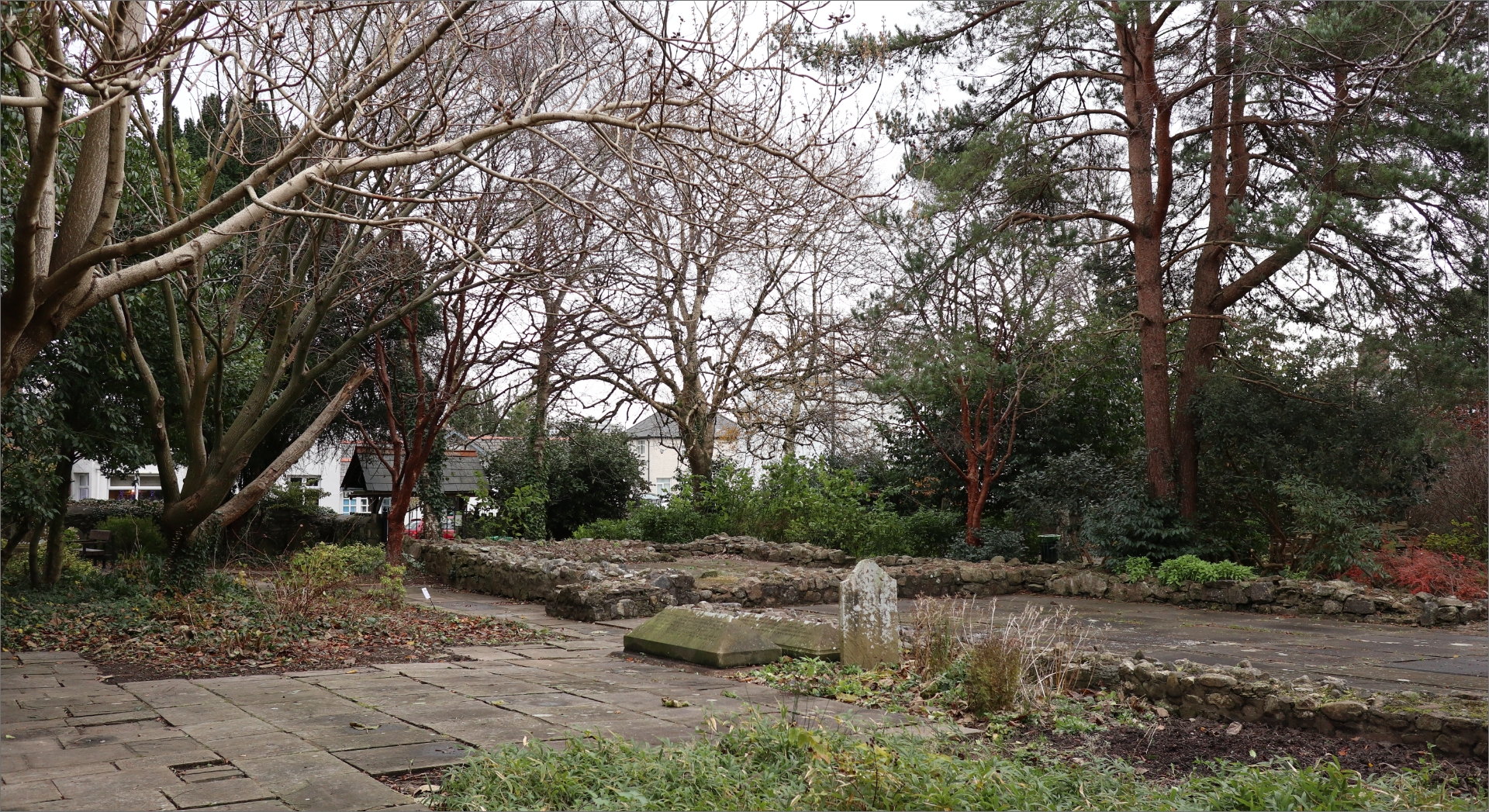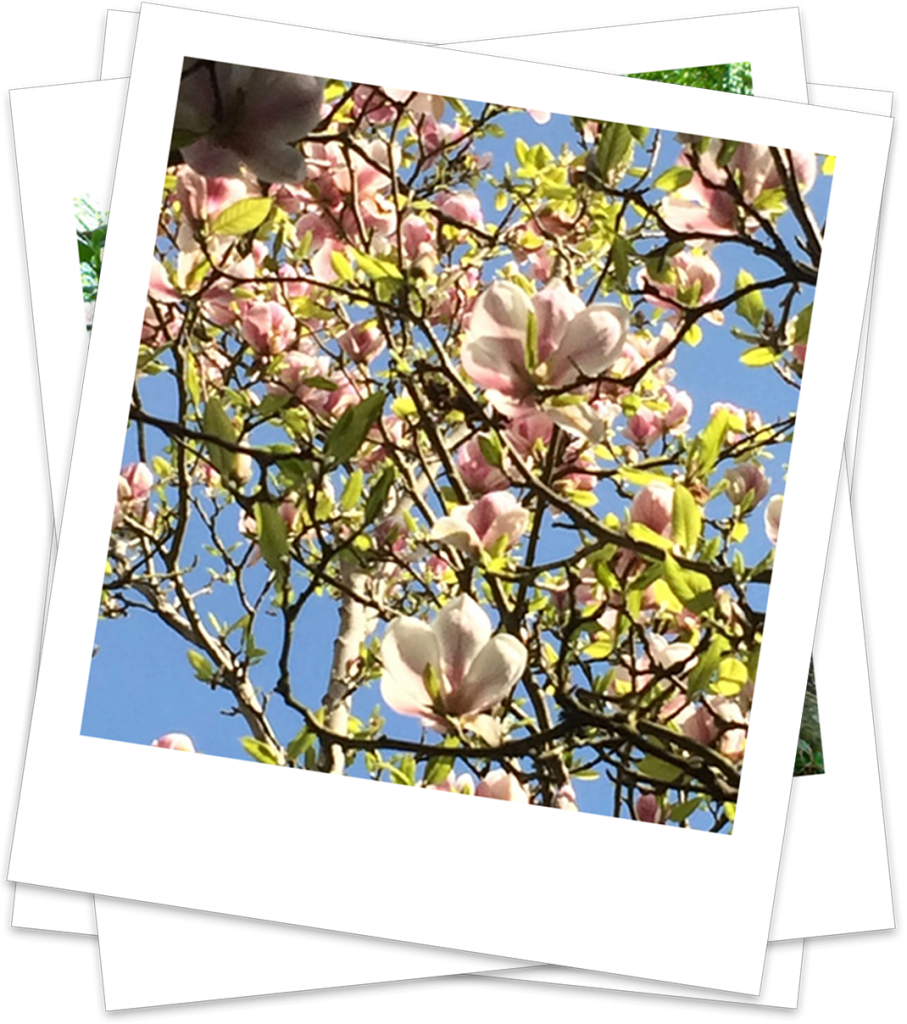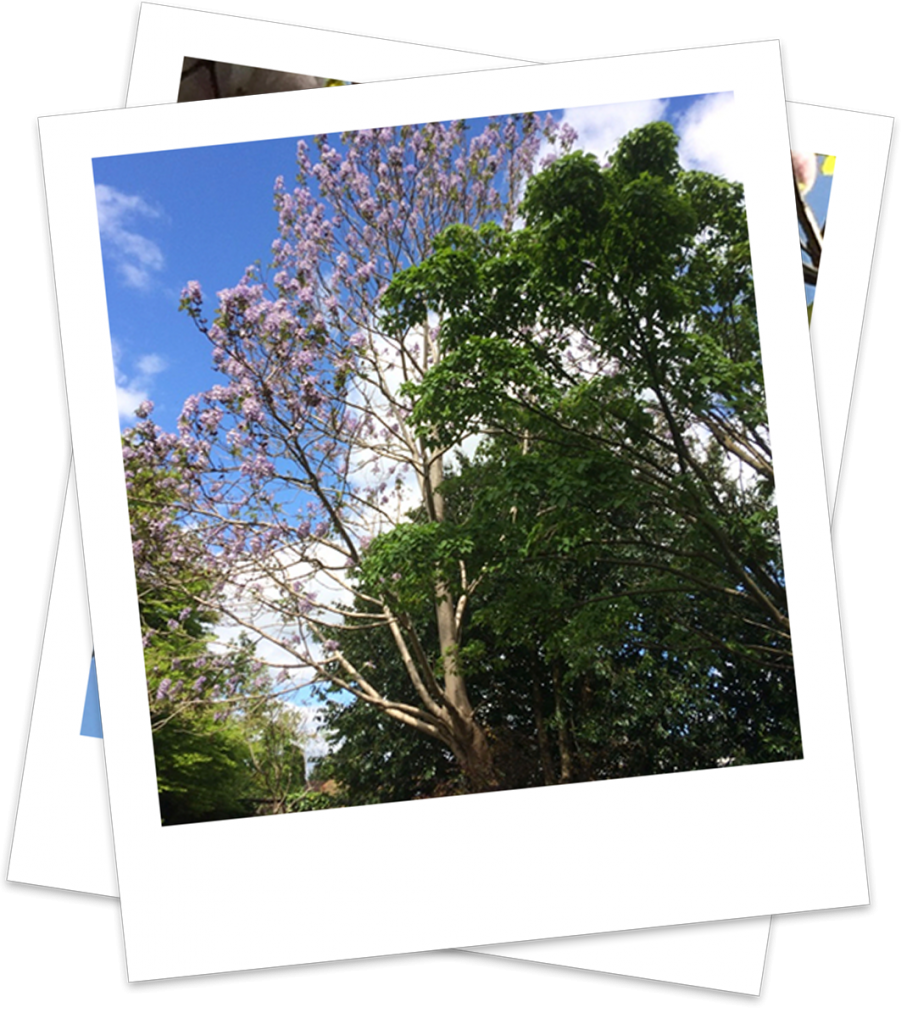
Plan of the Gardens
Plan of the Gardens
The Garden was designed as a small arboretum under-planted with shrubs. The numbers on the plan show the location of the trees listed below:
1 Common Yew (400 yrs. old)
2 Irish Yew
3 Paperbark Maple
4 Saucer Magnolia
5 Snakebark Maple
6 Foxglove tree
7 Merrill Magnolia
8 Cut-leaved Beech
9 ‘Golden King’ Holly
10 Red Oak
11 Drimys Winteri
12 Tulip tree
13 Scots Pine
14 Golden Ash
15 Silver Lime
16 Silver Birch
For further information on the historical features in St. Mary’s Gardens click the button below.
Trees And Blossoms To Look Out For
This Common Yew is the oldest tree in Whitchurch. It was planted in about 1640 and has a girth of 365cms. [No.1 on the Tree Location Plan] An Irish Yew was planted in the 19th Century, just to the right of the current entrance to the Churchyard. [No.2 on the Tree Location Plan] Yew trees, some of them well over 1000 years old, are often to be found in Churchyards. A possible reason is that the Druids regarded them as sacred and planted them at their sacred sites. Later these were used by early Christians as sites for their churches, thus perpetuating the association of yew trees with holy places. Other theories refer to the use of yew for making longbows; and to the motivation their poisonous berries gave to local farmers to ensure that the churchyard was cattle-proof.

The Paperbark Maple (Acer griseum) is native to Central China where it grows at altitudes of 1.500 – 2,000 metres (5,000 – 6,500 feet). It was introduced into Britain in 1901. It forms a medium-sized tree with distinctive shiny orange-red bark, peeling in thin, papery layers. There are two examples in the Gardens, on opposite sides of the church footprint. [No. 3 on the Tree Location Plan]

It is easy to miss the blossom of the ‘Saucer Magnolia’ (Magnolia soulangiana) despite its showiness because it is tucked up against the north wall of the churchyard where it is almost obscured by a self-seeded yew and an overgrown Portuguese Laurel. This is perhaps the most popular Magnolia species for the suburban garden. The flowers, which appear in April before the leaves, are saucer-shaped, white inside and tinged with purple at the base. [No.4 on the Tree Location Plan]

In May, when it is in flower, the Foxglove Tree (Paulownia) is a spectacular sight with its clusters of erect, mauve, foxglove-like flowers. [No.6 on the Tree Location Plan] It is a native of S.E. Asia. This picture of the example in St. Mary’s Gardens was taken in early May 2020. Unfortunately, a severe gale in February 2021 snapped the leading branch. Even so, enough has survived to allow the visitor to appreciate its flamboyance when in bloom. In Autumn its large seed-cases litter the ground below it.

Drimys Winteri [No.11 on the plan] takes its name from John Wynter, who accompanied Sir Francis Drake on his famous voyage around the world in 1577-80. As Wynter’s ship rounded the southern tip of South America his crew was suffering badly from scurvy – a frequently fatal disease caused by a lack of Vitamin C.
He sent a party ashore who came back with the bark of the Drimys tree, presumably advised by the native people. Boiled up with honey to make it more palatable it quickly solved the problem. Captain Cook is known to have taken powdered Drimys bark on his voyages.
A native of southern Chile & Argentina, in Spring this evergreen tree is covered by a mass of creamy white, fragrant flowers not unlike that of the Choisya on a larger scale.

